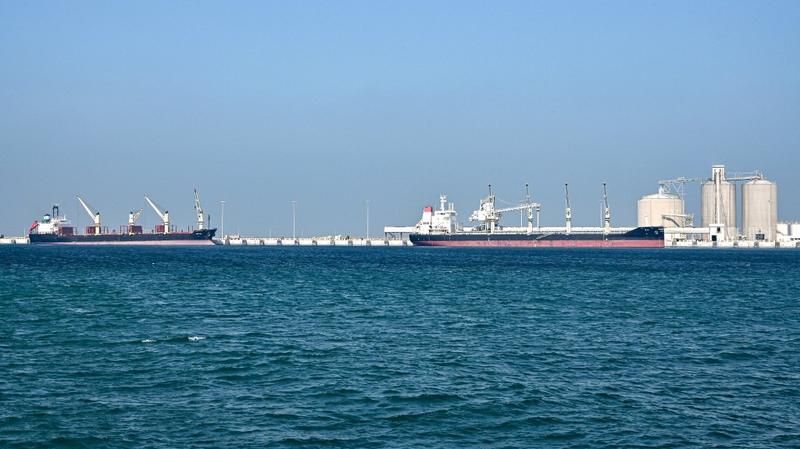 This photo taken on Dec 11, 2019 shows oil tankers at the port of Ras al-Khair, about 185 kilometers north of Dammam in Saudi Arabia's eastern province overlooking the Gulf. (GIUSEPPE CACACE / AFP)
This photo taken on Dec 11, 2019 shows oil tankers at the port of Ras al-Khair, about 185 kilometers north of Dammam in Saudi Arabia's eastern province overlooking the Gulf. (GIUSEPPE CACACE / AFP)
TOKYO - Oil prices lost as much as a third of their value on Monday in their biggest daily rout since the 1991 Gulf War after Saudi Arabia signalled it would hike output to win market share when the coronavirus has already left the market oversupplied.
Saudi Arabia slashed its official selling prices and made plans to ramp up crude output next month after Russia balked at making a further steep output cut proposed by the Organization of Petroleum Exporting Countries (OPEC) to stabilize oil markets.
Brent crude futures were down 22 percent at US$37.05 a barrel by 1000 GMT, after earlier dropping to US$31.02, their lowest since Feb 12, 2016
Brent crude futures were down 22 percent at US$37.05 a barrel by 1000 GMT, after dropping earlier to US$31.02, their lowest since Feb 12, 2016. Brent futures are on track for their biggest daily decline since Jan 17, 1991, at the start of the first Gulf War.
US West Texas Intermediate (WTI) crude fell by more than 24 percent, to US$33.20 a barrel, after touching US$27.34, also the lowest since Feb 12, 2016.
The US benchmark's biggest decline on record was in 1991 when it also fell by a third.
ALSO READ: Saudis plan big oil output hike, beginning all-out price war
"The timing of this lower price environment should be limited to a few months unless this whole virus impact on global market and consumer confidence triggers the next recession," said Keith Barnett, senior vice-president strategic analysis at ARM Energy in Houston.
The disintegration of the grouping called OPEC+ - made up of OPEC plus other producers including Russia - ends more than three years of cooperation on supporting the market, most recently to stabilize prices under threat from the economic impact of the coronavirus outbreak.
Saudi Arabia plans to boost its crude output above 10 million barrels per day (bpd) in April after the current deal to curb production expires at the end of March, two sources told Reuters on Sunday.
The kingdom has been producing around 9.7 million bpd in recent months.
The International Energy Agency said on Monday oil demand was set to contract in 2020 for the first time since 2009
Saudi Arabia, Russia and other major producers last battled for market share in 2014 as they tried to put a squeeze on production from the United States, which is not participating in any oil limiting pacts and has grown to become the world's biggest producer of crude.
READ MORE: Virus panic: OPEC+ weighs emergency response as oil slumps
"The deal was always destined to fail," said Matt Stanley, senior broker at Starfuels in Dubai, adding that the main result of the OPEC+ pact "has been that US shale producers have gained market share."
Saudi Arabia over the weekend cut its official selling prices for April for all crude grades to all destinations by between US$6 and US$8 a barrel.
"The prognosis for the oil market is even more dire than in November 2014, when such a price war last started, as it comes to a head with the significant collapse in oil demand due to the coronavirus," Goldman Sachs said.
The International Energy Agency said on Monday oil demand was set to contract in 2020 for the first time since 2009. It cut its annual forecast by almost 1 million bpd, signalling a contraction of 90,000 bpd.
Major banks such as Morgan Stanley and Goldman Sachs have cut their demand growth forecasts, with Goldman Sachs seeing a contraction of 150,000 bpd in global demand.
Goldman Sachs cut its forecast for Brent to US$30 for the second and third quarters of 2020.
READ MORE: Saudi Aramco drops 10% after kingdom triggers oil price fall


